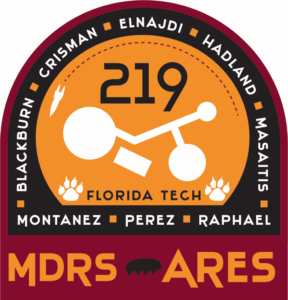
ARES Mars Desert Research Station Mission Summary
ARES MDRS Scientific Research and Engineering Testing
Astrobiological Research and Education Society (ARES)
Mission Overview:
The exploration of Mars has a myriad of physical and technical challenges that will demand the greatest ingenuity and moxie ever displayed by human explorers. To meet these challenges, STEM professionals use Mars Analogs like the Mars Desert Research Station (MDRS) to evaluate their procedures and technologies in a setting where challenges occur in real time. This provides feedback that permits space agencies to conduct safe and effective missions to Mars.
The Astrobiological Research and Education Society (ARES) was established to unite astrobiology scholars in the search for life and the study of Earth-born organisms that leave Earth. ARES engages in Mars analog studies for two justifications: to define the methods that which might detect life on Mars and to study biological sustainability techniques that facilitate long-duration habitation. Crew 219 came to MDRS with a variety of scientific and engineering-related challenges to expand on this work.
Crew Member Names and Roles:
Commander: David Masaitis
Executive Officer: Nathan Hadland
Lead Science Officer: Hannah Blackburn
Health and Safety Officer: Keith Crisman
GreenHab Officer: Cynthia Montanez
Astronomer: Robinson Raphael
Geologist: Abdul Elnajdi
Engineer: Alejandro Perez
Acknowledgments:
MDRS Crew 219 is supported by international partners including Florida Tech, Ball State University, Compass Equipment LLC, and Anker. We would also like to thank The Mars Society for providing three Scholarships to our IESL Crew 205 Veterans for this year’s visit. Outreach programs are ongoing using the following networks: ARES, Pi Lambda Phi Fraternity, and the Student Astronomical Society. We would like to thank several people: Dr. Andrew Palmer for his guidance, our outreach coordinator David Merced, Dr. Daniel Batcheldor, Dr. Sam Durrance, Dr. Saida Caballero, David Handy, MDRS Crew 205 (IESL), and you too!
Overview of Research
EVA Operations:
Crew 219 executed eighteen Extra-Vehicular Activities (EVAs), serving five of our seven projects. These projects collected data and we will begin post-mission analysis after our return. EVA’s consisted of geologic sampling for both mineralogical analysis and biological viability. We implemented Standard Operating Procedures (SOPs), which are available as separate appendices. After each EVA, biometrics data were collected for evaluation by the HSO.
Biometrics and Neurobehavioral Research Pertaining to Cardiovascular Health during EVAs
This was a two-series data collection taken concurrently: Series I focused on collection of biological metrics and Series II focused on collection of neurobehavioral metrics on varying schedules. Data collection for this research is nearly complete. It should be noted that some metrics were skipped or eliminated at the discretion of the HSO:
- Respiratory Rate (B4)
- Modified DAN OSNE (N3)
- Lower Extremity Measurements (B2)
Data collected was compiled in individual folders and broken down by Average (AVG) of individual metrics minus the Preliminary Collected Individual Metrics, Minimum Value (MIN), Maximum Value (MAX), Variation between MIN and MAX, and Variation from AVG and Preliminary Collected Individual Metrics. The latter values were recorded on a master spreadsheet to compare crew metrics by averaging each and deriving the deviation from the average for each crewmember at each metric. These will be combined with EVA data (time, duration, difficulty) and Sleep Logs to determine if the variations in and between crew members for each EVA were indicative of correlation between EVA and cardiovascular health decrement due to the high stress (physical and neurological) of long duration EVAs.
Further research would utilize in-situ recording devices during EVA, allowing for persistent data collection. One could then derive EVA duration and cardiovascular workload within simulated environments such as MDRS and extend into real-world off-planet science.
UAV Transport and Deployment
The objective of this project was to flight test a specialized quad-rotor UAV developed at Florida Tech. This preliminary phase of development is focused on the transportation, assembly, and deployment in a field environment. While later phases will focus on the more specialized performance aspects of the UAV, this mission sought to evaluate challenges involved in transport, deployment, and flight testing.
The UAV was assembled, and its camera assembly tested. During initial power-on, motors 1 and 2 tested successfully, but motors 3 and 4 failed to turn. Computerized diagnostics reflected the presence of the failing motors, so it was determined that further testing should be postponed in favor of fault isolation.
Fault isolation continued through the duration of the mission and revealed mechanical and electrical quality control issues that were not apparent when the UAV was collapsed into transport configuration. Due to a thorough investigation by the Engineer and his documentation of discovered issues, the UAV’s design team will have an evaluated list of repairs and improvements to make before it returns with next year’s mission.
Dust Mitigation for Optical Mirrors
Many telescopes rely on the detection of light after being reflected by mirrors. Environmental dust on these mirrors can cause obstructions or distortions of captured imagery. Removing it without damaging the mirror is time consuming. In this project, we tested known cleaning methods for optical mirrors in a Mars-like environment. We brought two 135 mm mirrors and a mount which were set up outside the Hab for 4 Sols. This served as a baseline for the effects of weather on an open optical mount. The mirrors were brought inside and given several days to remain undisturbed. Dust was introduced to the mirrors manually and 4 cleaning methods were tested. These methods are listed from most to least effective:
- Contact method (no cleaning solution): Optical brushes and cotton fiber swab
- Contact method (non-alcoholic): Lens tissue with optical screen cleaner (altura)
- Contact method (alcoholic): Cotton swabs and balls with rubbing alcohol
- Non-contact method: Blower
Methods were evaluated for time, simplicity, and effectiveness. Overall, the optical mirror brush proved the simplest and most effective for dust mitigation on Mars.
Astrophotography of Celestial Bodies
Using the MDRS-14 telescope, we observed celestial bodies to investigate the effect of various filters. Calibration and stacking of images was performed with AstroImageJ. Procedures were implemented to account for weather and atmospheric distortion. These methods include choosing the best fits file for each filter prior to calibrating and stacking as well as repeating observations for celestial bodies. The Discovery object observations planned were scrapped due to weather.
Observations conducted at MDRS included:
- M32
- NGC 7318
- NGC 1068
- Little Dumbbell Nebula
- Whirlpool Galaxy
- M40
- NGC 4258
Celestial bodies observed had two images generated: one composed of the Johnson-Cousins filter set (B, V, R) and the other composed of a generic filter set (Generic R, Generic V, Generic B). In addition to filters used, the noticeable differences in both images depended on the size and brightness of the object. An example is provided:

Whirlpool Galaxy (Color Image and Generic Color Image)
Using a set of generic filters alters the appearance of a celestial body from its color as the filters are not a single color. Generic filters made images brighter as opposed to the Johnson-Cousin set, but generic images tend to skew the quality of the image. Future work will test a wider range of celestial bodies with distinct characteristics and a wider variety of filters.
Remediation of Mars Regolith
This investigation consisted of regolith samples inoculated by cyanobacteria to examine mineralogical changes through primary and auto-succession. The intent was to take biologically inert regolith and transform it into substrate for food production. Regolith characteristics of interest were clumping, wettability, and chemical and textural changes. Four samples of regolith were collected during EVA missions. The cyanobacteria used in this study was Anabaena cylindrica.
Daily measurements of cellular density were taken to measure population variations. Initial density was 1.78 x 105 cells/mL, an order of magnitude less than laboratory cellular density values. There was a significant change in algal color during transportation, which indicated a decrease in chlorophyll a and cell death. Low cell count and color change likely occurred due to lack of light and low temperature exposure. Cellular revitalization would have exceeded mission duration, so initial counts were taken and regolith samples were immediately inoculated. Three groups for each regolith sample were tested:
9 mL of regolith, 3 mL of media, and 1 mL of A. cylindrica
9 mL of regolith and 1 mL of A. cylindrica
9 mL of regolith (control)
After four days, no viable A. cylindrica were viewed in the samples. A. cylindrica did not survive the inoculation process, due to low initial cell count and continued exposure to temperatures below 15°C.
Upon completion of the Mars analog mission, follow up assessments will be made by using Electron Dispersive Spectroscopy (EDS) and Scanning Electron Microscopy (SEM) to identify changes in the regolith. We investigated the properties of the regolith as compared to controls to observe the effects of A. cylindrica. Though this study did not result in an observable growth or decay in cyanobacteria population, we were able to investigate the regolith’s clumping, texture, and dryness. Further analysis will be completed back at Florida Tech.
Chemical and Mineralogical Composition of the MDRS Site
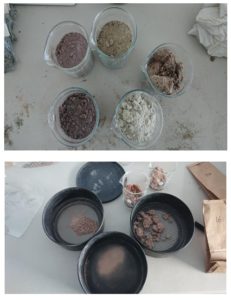 This research used collected samples from the MDRS region to determine chemical and mineralogical compositions of regolith using X-Ray Diffraction (XRD) and X-Ray Fluorescence (XRF) analysis. Through small samples of regolith, we can infer the mineralogy, composition, and grade of the surrounding region.
This research used collected samples from the MDRS region to determine chemical and mineralogical compositions of regolith using X-Ray Diffraction (XRD) and X-Ray Fluorescence (XRF) analysis. Through small samples of regolith, we can infer the mineralogy, composition, and grade of the surrounding region.
The following steps have been completed for Crew 219’s mission:
- Collected samples at 13 sites in the greater MDRS region and marked with GPS points.
- Dried in an oven at 100 C0 and cleaned of impurities and plant roots. The samples were then sifted to two different sizes: 60m and 5m.
- The samples were placed in special containers for shipment.
- Run XRD and XRF analysis. This will take place in the geochemistry labs at Florida Tech and Ball State University.
- Generation of a GIS map of the mineralogical composition of the site for future crews to use.
Protocols for the Discovery of Life on Mars
Crewed expeditions to Mars will need methods to identify and characterize extraterrestrial biology. Given the persistence of water on Mars, it is possible that life has or may exist on the surface. Our research focused on three categories of samples collected:
- Known sources of microbial life (i.e. standing water, lichen, etc.)
- Fossilized invertebrates (i.e. gryphea) as a proxy for extinct life
- Random samples
Samples were photographed and collected for further study using fractal analysis, a possible method in the identification of extraterrestrial life. Previous work has demonstrated that fractals are an indicator of life on a microscopic and macroscopic scale. Using fractal patterns instead of chemical signatures allows us to identify non-standard biology on other planets. We took macroscopic and microscopic images of the types of samples listed above. Using FrAn, a Python program, we will analyze images for their fractal dimension or “D” value (Azua-Bustos and Vega-Martinez 2013). This analysis will be performed upon return.
Future work will use images taken by our UAV and processed in FrAn. Using a UAV to identify areas with a greater “D” value can prioritize EVA sites as potential habitats, allowing astronauts to focus on the most promising locations.
Recommended Standard Operating Procedures and Inventories
Crew 219 tested procedures and checklists developed by Crew 205 (IESL), designed to improve crew efficacy. These procedures focused on improved performance for EVAs, tasks for Crew Engineers, HSOs, and team leaders. These task sheets were printed and laminated prior to rotation and will be handed to the assistant director upon completion of the mission. They will also be available digitally as a collection of appendices.
Recommended Update to Pre-Mission HSO Checklist Rationale
Crew 219’s HSO used his extensive safety and human-factors background to make a pointed re-evaluation of the HSO Pre-Mission Checklist, as included in the mission appendices. The rationale behind these suggestions are based on efficiency and ergonomics of safety systems inspection and inventories, and bolster risk analysis and mitigation.





 This research used collected samples from the MDRS region to determine chemical and mineralogical compositions of regolith using X-Ray Diffraction (XRD) and X-Ray Fluorescence (XRF) analysis. Through small samples of regolith, we can infer the mineralogy, composition, and grade of the surrounding region.
This research used collected samples from the MDRS region to determine chemical and mineralogical compositions of regolith using X-Ray Diffraction (XRD) and X-Ray Fluorescence (XRF) analysis. Through small samples of regolith, we can infer the mineralogy, composition, and grade of the surrounding region.
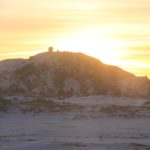
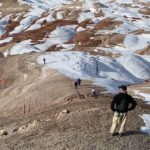
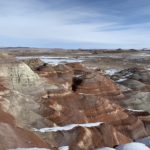

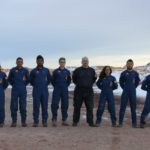
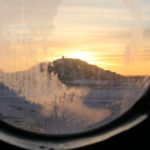
You must be logged in to post a comment.